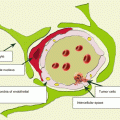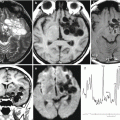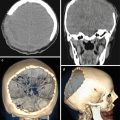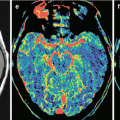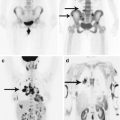, Valery Kornienko2 and Igor Pronin2
(1)
N.N. Blockhin Russian Cancer Research Center, Moscow, Russia
(2)
N.N. Burdenko National Scientific and Practical Center for Neurosurgery, Moscow, Russia
There is still quite a large group of patients, in whom secondary brain involvement is the only manifestation of cancer. In this case, metastasis of unknown primary origin (cancer of unknown primary origin, CUP) is suggested, which does not mean that it actually does not exist. The importance of solving the issue of specifying the diagnosis of metastases of unknown primary origin cannot be overestimated. In a large frequency of cases, where the clinical picture of metastatic involvement of the brain is the only manifestation of a malignant tumor of unknown primary origin, often inaccessibility of metastatic lesions for a biopsy to obtain the tissue samples for morphological identification of the tumor does not allow to provide adequate medical care for such patients. The development of modern technologies gives us more and more new diagnostic possibilities in this regard; however, so far, this does not give any grounds for reasonable optimism. The incidence of CUPs does not decrease; often the primary source is detected only in an autopsy. This group of patients proves again that many aspects related to the mechanisms of emergence and development of human cancers have not yet been identified.
Statistical data on the incidence of tumors of unknown primary origin in patients with proven metastases in the brain is quite variable, with the latter being, according to various estimates, 10–40% and 10–15% (Campos et al. 2009, Zimm et al. 1981, Gramada et al. 2011). Indeed, it affects the life expectancy of these patients, although the prognosis is similar both for patients with known and unknown primary origin (Rudà et al. 2001).
The picture of multifocal brain involvement suggests the metastatic origin of neoplasms.
In case of a solitary lesion, the differential diagnosis with glioblastoma is carried out before a biopsy or a surgical removal of the tumor, because of the similarity of their X-ray pictures. Very important is correct taking of medical history, since glioblastoma transformed from glial tumors grade 2–grade 3 may have a long duration with mild transient symptoms (impaired speech, dizziness, numbness in the fingers, loss of consciousness, inadequate behavior), which is often observed by the patient’s relatives. Metastases grow more aggressively; the clinical picture develops rapidly.
On the other hand, in case of multifocal lesions, there is a risk of misdiagnosis, since up to 20% (Campos et al. 2009) of glioblastoma cases manifest by multifocal lesions and multicentrically in 2.4%, with involvement of the contralateral hemisphere of the brain (Shakur et al. 2013). Multifocal brain lesions are also diagnosed in lymphoma, demyelinating diseases, parasitic infestation, etc.
In most cases with no primary lesion detected, metastases in the brain occur in highly differentiated adenocarcinoma (50–70% of all CUPs), poorly differentiated cancers (20–25%), squamous cell carcinoma (about 10–5%), and neuroendocrine tumors (about 1%) (Mayor 2010; Seyedin and Geffen 2014).
Stay updated, free articles. Join our Telegram channel

Full access? Get Clinical Tree



